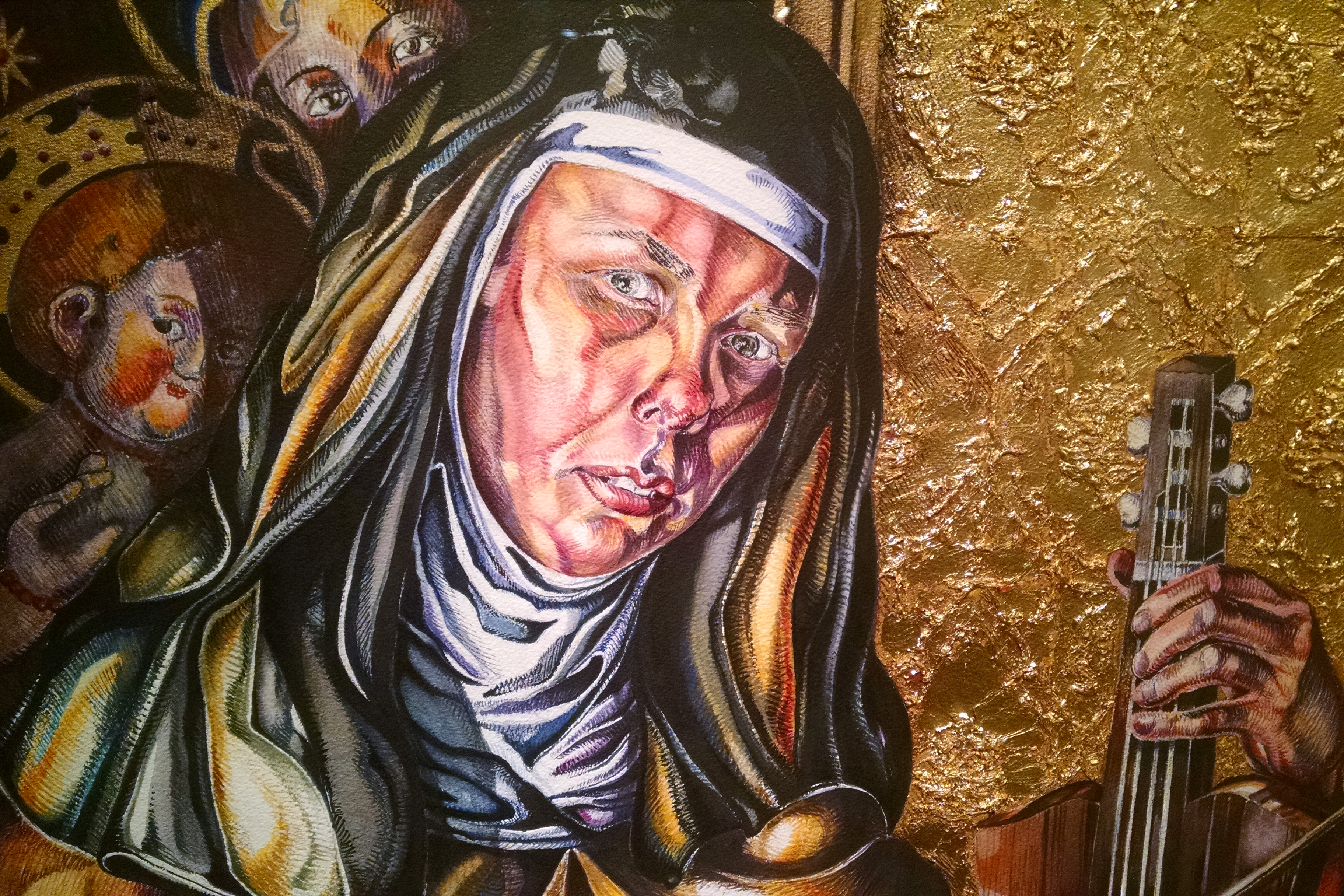
A self-portrait has been a common element in the portfolio of artists for centuries, gaining widespread popularity in the Early Renaissance period in the 15th century, when an artist’s image could often be found as part of a larger work depicting mythical or historic scenes.
Watercolorist Holly Trostle Brigham has placed herself in the role of historic figures in her work over the years, especially in her “Seven Sisters” series aimed at illuminating the lives of notable women artists, such as the painters Tamara de Lempicka and Frida Kahlo.
Her newest paintings combine her bold portraits of eight nuns from the 12th to the 19th centuries with poems by award-winning poet Marilyn Nelson, UConn professor emerita of English, in “Sacred Sisters: In Praise of Art & Poetry.”
The exhibition, which runs from Oct. 22 through Dec. 20 at the William Benton Museum of Art, is the first time the eight works will be displayed together. It is the result of a collaboration between Brigham and Nelson, who met three years ago in Philadelphia and discovered a common interest in giving voice to often obscure figures in history.
“One of the things we connected with was our interest in religion,” Brigham says, noting that Nelson often writes about race and culture. “She said, what about a Buddhist nun?”
Among the portraits are depictions of Otagaki Rengetsu, a Buddhist nun considered one of Japan’s leading poets in the 19th century; Henriette DeLille, who founded the Sisters of the Holy Family in New Orleans, the first Roman Catholic order for African American women; and Hilaria Batista de Almedia, leader of the Sisterhood of the Good Death in Brazil, a group of women of African descent over the age of 40 that was founded in the 19th century.
Nelson has worked before with illustrators creating images to accompany her writings, but this was the first time she worked so collaboratively with a visual artist. For “Sacred Sisters,” the poet and artist exchanged numerous emails with information and ideas as each developed their work.
“The illustrator takes your words, but this is different,” Nelson says. “It’s a lot of fun to work with another person. Why should these two art forms be separate?”
Brigham says using herself as the model for her paintings is in the tradition of doing portraits from live models, which is not possible when working to depict historic figures.
“It’s best to work from life,” she says. “I’m dealing with subjects no longer living. To give them vitality, I’ve just continued to use myself as the model.”

She deviated from that approach, however, during the creation of the Rengetsu painting, when Brigham used a model for the Japanese nun, feeling she could not create an Asian image of herself. She did place herself in the background of the portrait, a technique commonly used by artists, in a theater mask hanging on the back wall.

The exhibition also includes a sculptural installation connected to a portrait of the Benedictine abbess Hildegard von Bingen of Germany, who founded the monasteries in Rupertsberg and Eibingen in the 12th century.
Brigham began to focus her portraits for the “Seven Sisters” work through her involvement with the collective of contemporary women’s artists known as Corpus VI, who studied together at the Pennsylvania Academy of the Fine Arts more than a decade ago. Robert Cozzolino, curator of modern art at the Academy, wrote of Brigham’s initial “Seven Series” work: “These paintings represent her most complex and sustained exploration of self-hood and artistic identity.”
The exhibition will run concurrently with the 49th Annual Art Department Faculty Show at the Benton, which embraces a broad spectrum of mediums, including painting, sculpture, illustration, graphic design, printmaking, photography, and installation art. Works by John O’Donnell, assistant professor of printmaking, and Alison Paul, lecturer in illustration and animation, are showcased.
For more information go to the Benton website.



